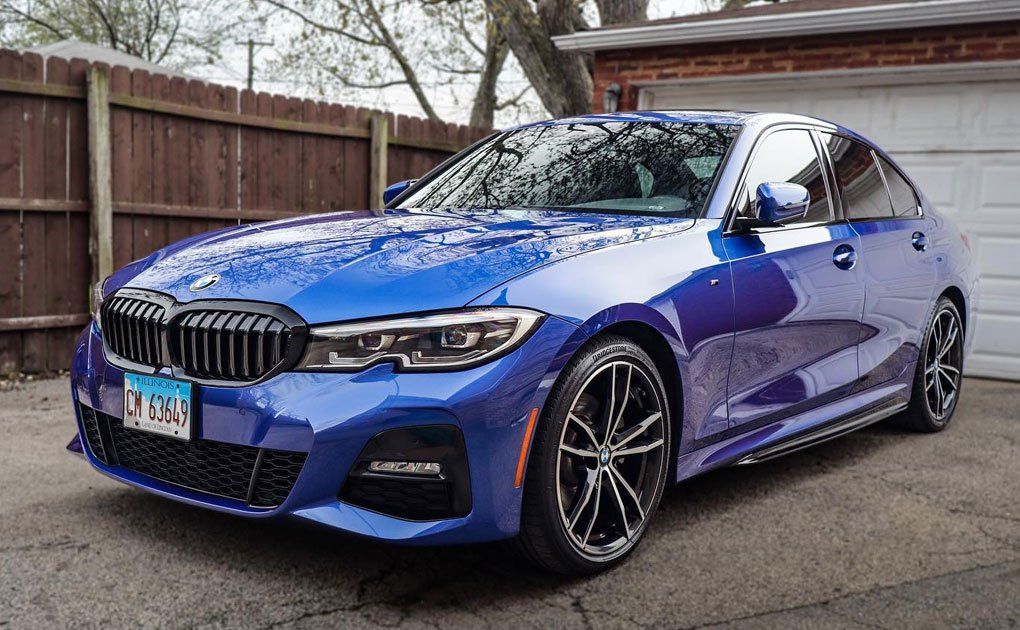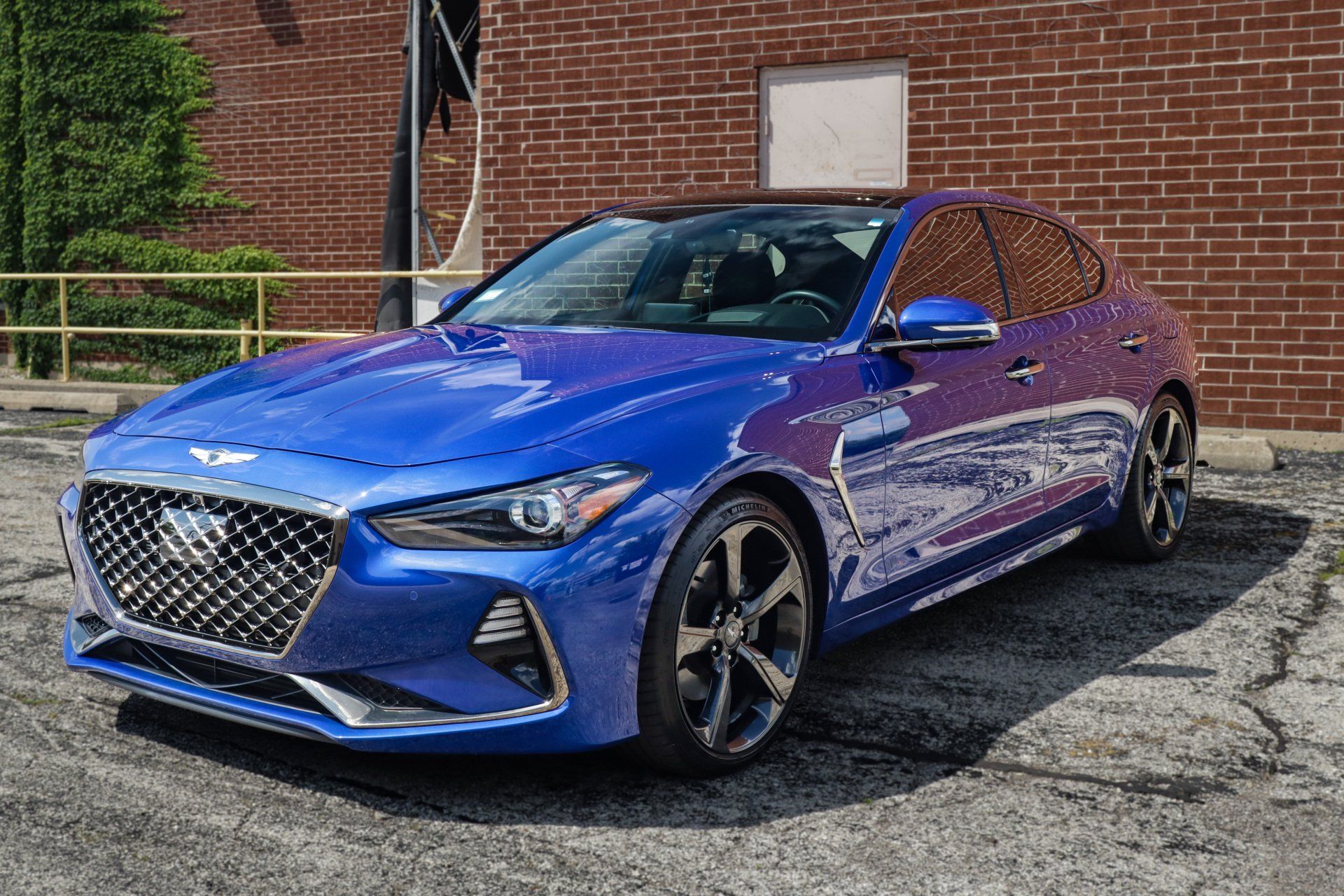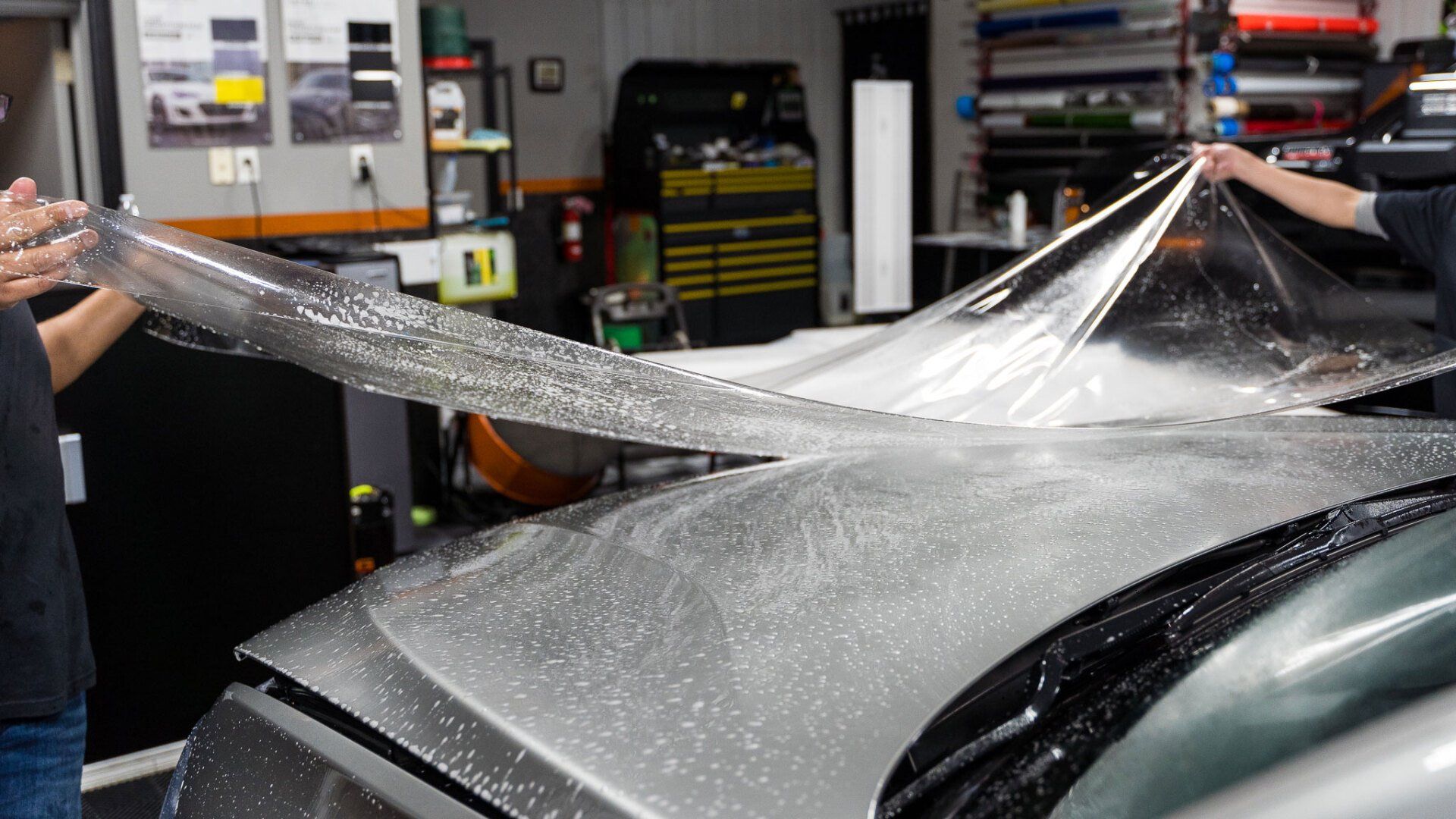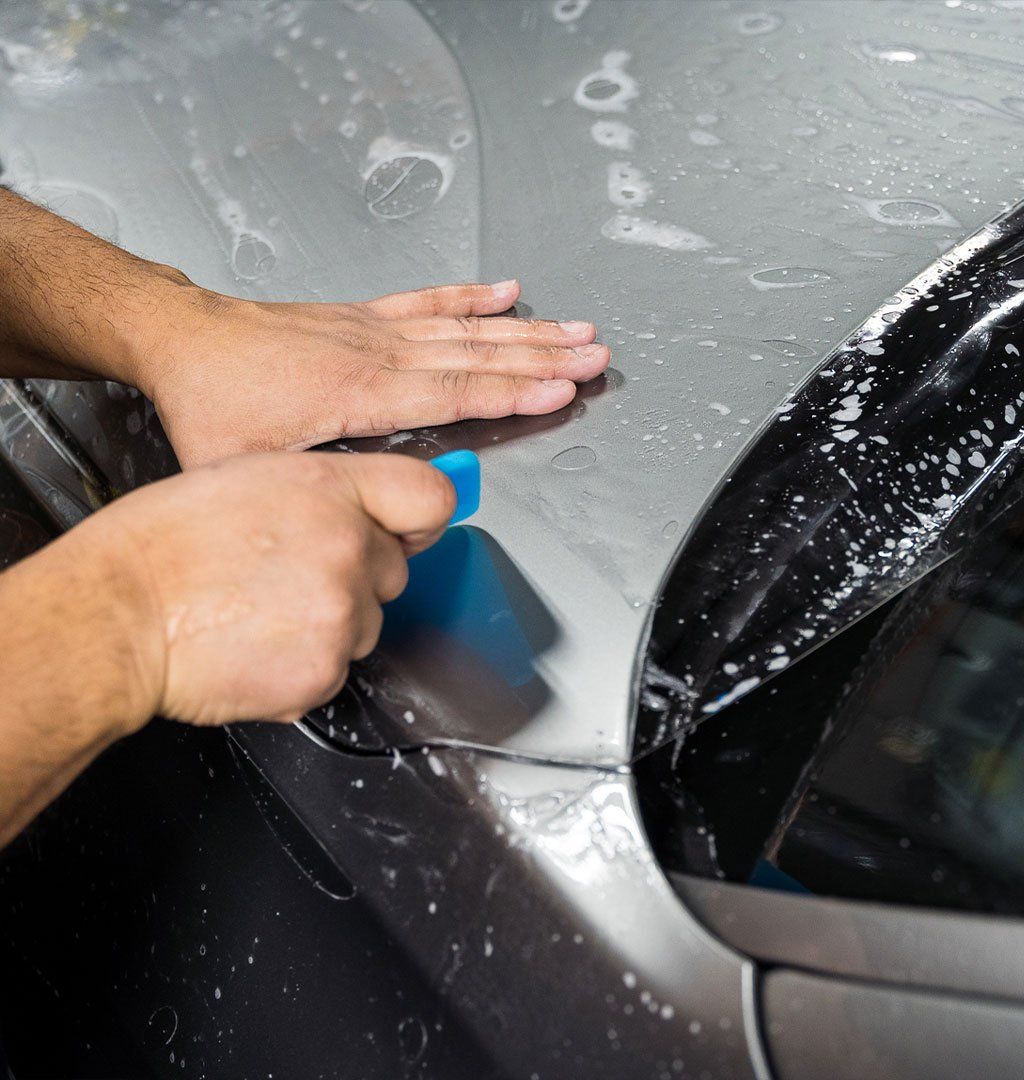How Long Does Paint Protection Film Really Last? Insights on Durability
CALL (708) 574-8496
GET A FREE ESTIMATEWhen it comes to keeping your car looking fresh and new, many people are curious about what truly works. Have you ever wondered if paint protection film (PPF) is worth the investment? Well, you're not alone. With so many options available for protecting your vehicle's exterior, it’s essential to know just how long PPF lasts and what factors can impact its durability. In this article, we'll dive into the lifespan of paint protection film, detailing how it works and why it might be a game changer for preserving your car’s finish over time. Whether you're a car aficionado or just want to keep your ride looking sharp, understanding PPF could save you from costly repairs down the road.
Paint protection film typically lasts between 5 to 7 years, though some high-quality brands like Xpel claim their products can last up to 10 years under optimal conditions. Factors such as driving conditions, maintenance, and environmental exposure can significantly influence the longevity of PPF.
What is Paint Protection Film?
Paint Protection Film (PPF) is a thermoplastic urethane film that acts like a shield for your vehicle's painted surfaces. Imagine wrapping your car in a layer of invisible armor. This film prevents scratches and chips from road hazards and protects against environmental damage, including UV rays that can cause fading over time. By serving as a sacrificial layer, it absorbs wear and tear that would otherwise compromise your paint job, extending the life of your vehicle's exterior.
The beauty of PPF lies in its self-healing properties—minor scratches can disappear when exposed to heat, allowing the film to maintain a spotless appearance without much intervention. This unique feature distinguishes it from traditional vinyl wraps, which are primarily for aesthetics and lack the protective capabilities of PPF. Although PPF is durable, it's not impervious to all damage; understanding its limitations sets realistic expectations regarding its performance.
Reputable brands have become household names in the PPF market, admired for their high-quality products that combine resilience with user-friendly installation processes. Many users report satisfactory experiences, claiming their vehicles remain stunningly preserved even after harsh conditions like autocross events or extended drives under the sun.
Just as you would take proactive measures to protect your smartphone with a screen protector, PPF provides that same peace of mind for your vehicle. Its thickness typically ranges from 6 to 8 mils, adding minimal weight or bulk but offering substantial protection. The clarity of the film means it doesn’t detract from the aesthetics of your car; instead, it enhances its appearance by maintaining the original gloss and finish of the paint underneath. With this foundational understanding of what PPF is and how it serves as an important line of defense for your vehicle, we can now transition to practical considerations surrounding its longevity and how it holds up over time.
Durability Over Time
While PPF is designed for resilience, its effectiveness largely depends on various influencing elements. On average, standard PPF boasts a lifespan of about 5 to 7 years when regularly maintained. However, certain high-end options, such as self-healing or ceramic-coated films, can extend that lifespan significantly, lasting from 7 to 12 years under optimal conditions.
The quality of the film itself plays a vital role in determining durability. Premium-grade films from reputed manufacturers often include advanced features that enhance their protective capabilities. For instance, self-healing PPF automatically repairs minor scratches and abrasions when exposed to heat, helping maintain its pristine appearance. In contrast, lower-quality versions may show signs of wear and fading sooner, diminishing aesthetics and protection. Yet, even the finest film requires proper care; neglecting maintenance can lead to a rapid decline in its effectiveness.
Maintenance is pivotal for preserving your PPF's lifespan. Regular cleaning with pH-balanced products ensures that contaminants like dirt, grime, and road salts do not degrade the film over time. Think of it this way: just as we protect our skin from harmful UV rays with sunscreen and regular cleaning, your car’s exterior deserves similar attention to keep the PPF intact and effective.
Additionally, environmental exposure cannot be overlooked. Intense UV rays and extreme temperatures can hasten the aging process of your PPF. If you frequently park your car under the blazing sun or expose it to harsh winter conditions without protection, you may notice a decrease in lifespan more quickly than anticipated. Understanding these elements sets the stage for a deeper look into what specifically influences the longevity of paint protection film.
Factors Influencing Lifespan
The durability of Paint Protection Film (PPF) doesn't just depend on the quality of the product itself but also on several external factors that can significantly impact its longevity.
One of the first considerations is exposure to elements. Frequent exposure to harsh conditions such as intense sunlight, temperature extremes, and environmental pollutants can wear down PPF more quickly than in milder conditions. For instance, cars parked in sunny climates could experience a decrease in PPF lifespan by 15-20% compared to vehicles kept in cooler, shadier environments. Sunlight can damage the film's adhesive properties and lead to fading or cracking over time, making it crucial to be mindful of where you park your vehicle.
But it doesn't stop there; how you care for your car plays an equally important role as well. Maintenance practices are vital for prolonging the life of PPF. Regular cleaning helps maintain not only the appearance but also the integrity of the film. Using improper cleaning products, like abrasive cleaners or harsh chemicals, can cause microscopic scratches or even strip away essential protective layers. It's best to opt for pH-neutral soap along with a soft microfiber cloth when washing your vehicle. This gentle approach allows you to clean effectively while minimizing surface damage. For those stubborn spots—say, bird droppings or tree sap—taking immediate action and using detailer spray on soft cloths can help prevent long-term staining and damage.
Lastly, let's talk about how installation quality can have a profound effect on lifespan. The importance of installation quality cannot be overstated when it comes to maximizing the durability of PPF. Observations from users indicate that professionally installed PPF often outlasts DIY installations because certified technicians possess the skills and expertise needed for proper application without unsightly bubbles or wrinkles that might lead to peeling later on. A thorough installation will cover edges and contours precisely, preventing any potential lifting or entry points for dirt and moisture that could degrade the film over time. Investing in professional installation not only guarantees enhanced longevity but also greater peace of mind knowing that you're well protected against everyday wear and tear.
Through understanding these key factors—exposure to elements, maintenance practices, and installation quality—you'll be more equipped to preserve your car's Paint Protection Film and ensure it maintains its protective capabilities for years to come. Drawing upon this knowledge is essential as we explore how different surfaces respond uniquely to various protection strategies.
Longevity Across Different Surfaces
When applying PPF to your vehicle, it's crucial to recognize that its durability and effectiveness will largely depend on the surface material. Understanding how PPF interacts with various surfaces can help ensure that you make informed decisions about where and how to apply this protective film.
Metal vs. Plastic Panels
One of the most striking differences is between metal and plastic panels. Metal surfaces generally provide a more stable foundation for PPF. This is primarily because metal tends to expand and contract uniformly with temperature changes, allowing the PPF to adhere more effectively.
On metal surfaces, you can expect Paint Protection Film to last up to 10 years, maintaining its integrity and optical clarity. Conversely, plastic panels present a challenge; they expand and contract at different rates compared to metal, which can compromise the adhesion of the film. This variability often results in a shorter lifespan for PPF on plastic surfaces—typically around 6 to 8 years. Therefore, if you have a combination of both materials on your vehicle, consider prioritizing metal areas for application to maximize durability.
Smooth vs. Textured Surfaces
The texture of a surface also plays an essential role in the performance of PPF.
- Smooth Surfaces: These offer excellent adhesion chances for PPF but come with their own set of challenges. A perfectly executed application process is vital here; even the smallest air bubble trapped under the film can lead to premature wear or deterioration. Therefore, it’s essential for installation to be done meticulously to achieve optimal results.
- Textured Surfaces: While textured surfaces pose difficulties during application—they can trap air and cause uneven adhesion—they also have their advantages. The rough nature of these surfaces may allow for better protection against minor impacts such as scratches or stone chips, as they create additional spaces for impact absorption. However, achieving effective adhesion remains critical, making professional installation highly recommended for these surfaces.
Understanding how PPF interacts with both types of materials helps you choose wisely about where best to apply this protective film to your vehicle. By considering the properties of each surface type, you can enhance the durability and effectiveness while also exploring comparisons with other protective options available in the market.
Economic Value Compared to Alternatives
When considering how to protect your vehicle's pristine finish, understanding the costs associated with different options is crucial. PPF stands out as a strong contender in terms of long-term value. The initial investment for PPF may appear significant, typically ranging from $800 to $2,500, depending on coverage and quality. However, when measured against its lifespan of 5 to 10 years, the value becomes more apparent. This longevity means that over time, the annual cost of maintaining a PPF-covered vehicle adds up to become quite economical in contrast to other options.
In comparison, let’s look at ceramic coatings and regular waxing. Ceramic coatings generally set you back between $1,000 and $3,000 but only last around 2 to 5 years. While they offer some level of protection and convenience in terms of maintenance, they fall short of providing the physical barrier that PPF does. On the other hand, regular car wax—often touted for its affordability at $20 to $200—requires frequent reapplication every 3 to 6 months; cumulatively, this could lead to spending anywhere from $1,000 to $3,000 over ten years just to maintain a similar aesthetic sheen that PPF offers out of the gate.
A common viewpoint among car enthusiasts is that while PPF requires an upfront investment, the comprehensive protection it provides against scratches, chips, and environmental damage far outweighs those initial costs.
The low maintenance requirement associated with PPF further enhances its appeal. Unlike car wax—which demands consistent upkeep and can involve laborious applications—the maintenance for PPF is relatively simple: routine washes and occasional inspections are usually sufficient. With proper care and cleaning practices, this film can sustain its effectiveness for many years without needing replacement or extensive intervention.
Users frequently conclude that the comprehensive shield against physical damage and wear that PPF delivers justifies any higher upfront costs compared to alternatives like ceramic coatings or waxing. This assessment represents a significant consideration—especially for car owners determined to maintain their vehicles' aesthetics without being tied down by frequent labor-intensive upkeep. As we look further into protective solutions for vehicles, it's essential to weigh the various benefits offered by options like this one.
Weighing the Benefits of PPF
Choosing to invest in PPF involves careful consideration of what it offers beyond its upfront cost. For many car owners, the decision hinges not just on immediate expenses but on long-term value and peace of mind. The reality is that PPF can serve as a critical component in maintaining your vehicle's pristine condition—in both appearance and function—over the years.
Comprehensive Protection
One of the standout features of PPF is its ability to provide comprehensive protection. Imagine driving down a gravel road, where rocks and debris are flying everywhere. Without PPF, each little chip and scratch can detract from your car's beauty and, worse, compromise its paint integrity. However, with PPF applied, these incidents become mere nuisances rather than permanent blemishes on your vehicle.
Notably, one user remarked, "My car looks as good as new even after three years, thanks to PPF." This encapsulates how effective PPF can be at shielding your car against physical damage from road debris, minor collisions, and environmental contaminants. While there's an initial investment involved—especially with professional installations—consider this: every scratch prevented is not only a dent in your wallet avoided but also a step towards preserving your vehicle’s resale value. In the competitive used car market, a car with a flawless exterior will often command a higher price, translating to real savings in the long run.
Aesthetic Maintenance
Another crucial advantage of PPF lies in its aesthetic benefits. High-quality films are equipped with remarkable self-healing properties; minor scratches and swirls disappear when exposed to heat—either from sunlight or simply by washing with hot water. This feature significantly reduces the need for frequent detailing visits. Instead of scheduling regular trips to keep your car looking sharp, you’ll find yourself enjoying that glossy finish with minimal effort.
Think of it like wearing a protective cover for your most prized possessions; while it isn't visible all the time, it adds substantial value by maintaining their original state without compromise. Therefore, while PPF might seem like a significant investment at first glance, evaluating its durability alongside these protective features reveals how crucial it can be for enhancing both appearance and resilience—a compelling choice that many discerning vehicle owners appreciate.
In summary, investing in paint protection film offers both immediate benefits and long-term advantages that make it worthwhile. Protecting your vehicle not only preserves its beauty but also safeguards your investment for years to come.
Ultimate Defense for Your Vehicle’s Finish in Carol Stream, IL
Shield your car from road debris, rock chips, and the harsh elements with D’Andrea Auto Detailing’s premium paint protection film services. Our expertly installed PPF provides a durable, nearly invisible barrier that preserves your vehicle’s pristine look without compromising its original finish. Whether you're cruising through Carol Stream or taking on long-distance drives, our team ensures your vehicle stays protected with the highest quality materials and flawless application techniques. Enhance the lifespan of your car’s paint with our cutting-edge solutions. Schedule your service today and experience unmatched care for your ride.





